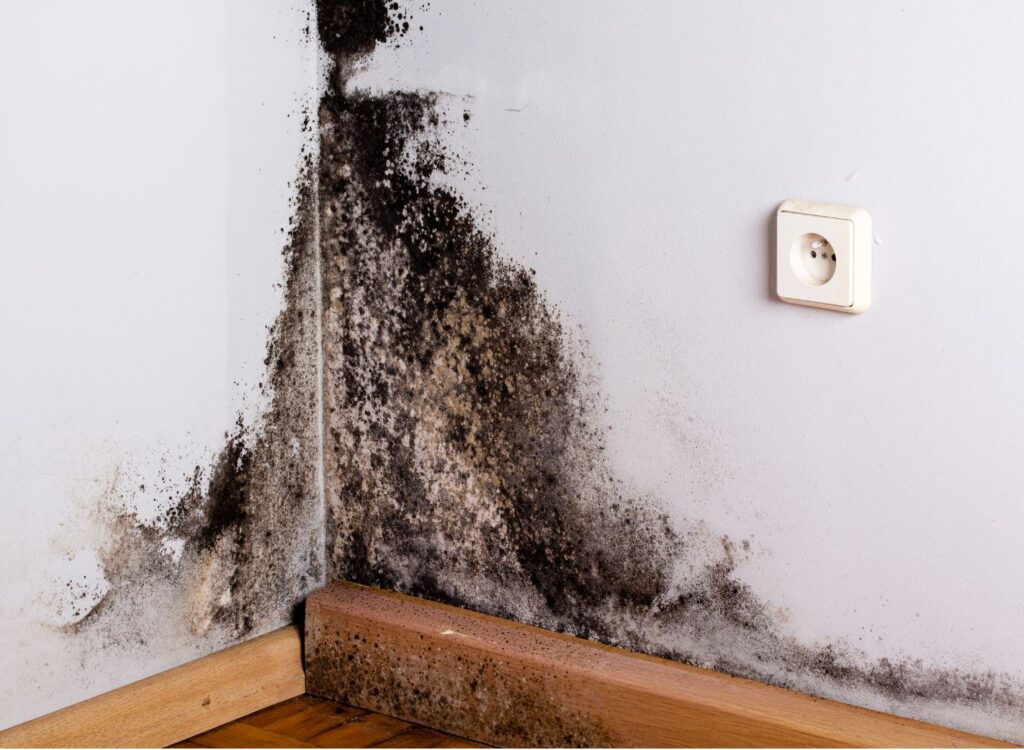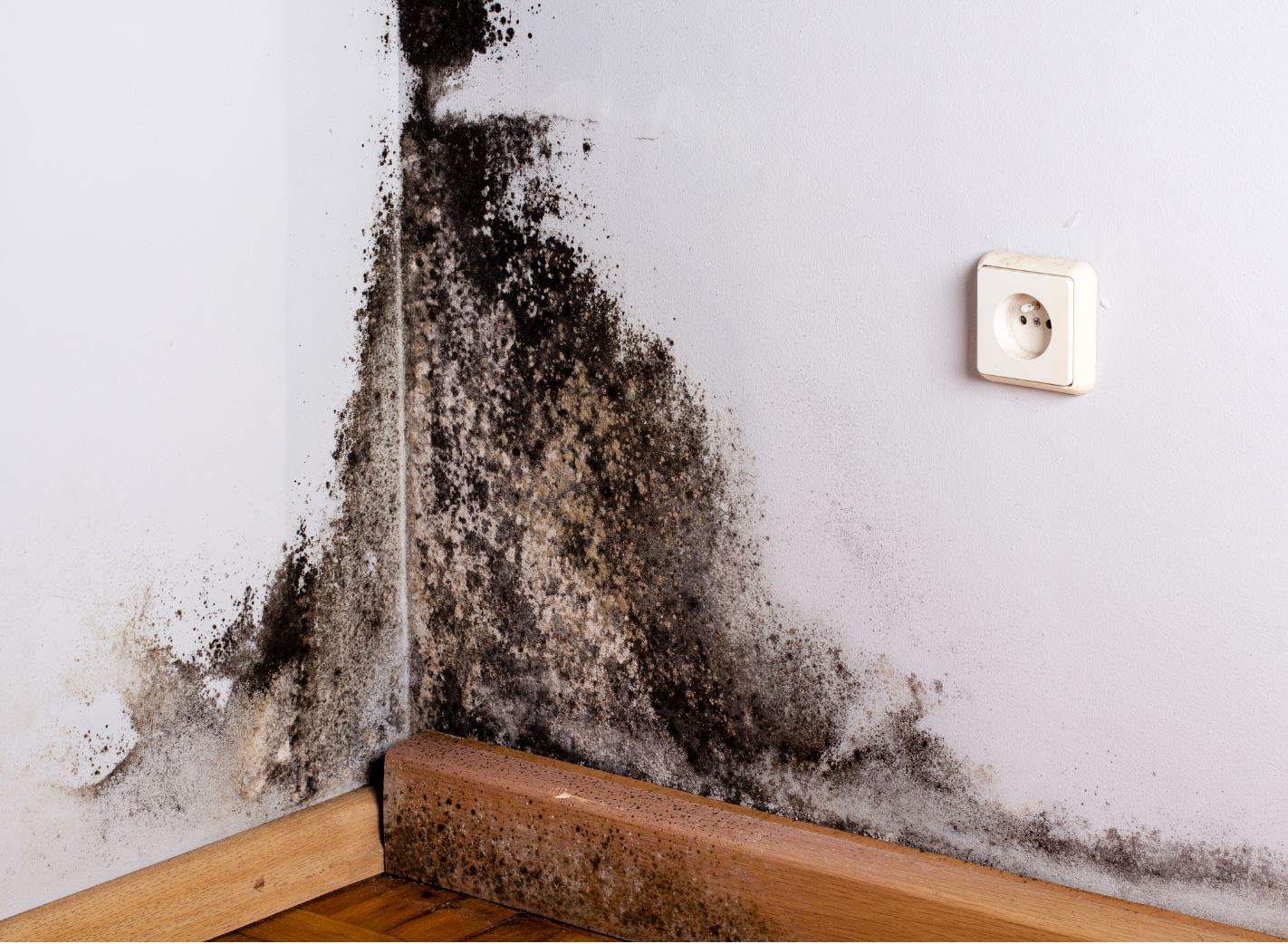Many people find they have a chronic illness and they don’t know how or why they got it. But new research from the US shows that 70 to 90{e43154ce913794517af217fcab284b44cfe906ba9a1c4ba2ecde5a9be0395ec5} of disease risks are probably due to differences in environments. The highest risk is poor indoor air quality and mould-contaminated buildings are the major factor (Rappaport & Smith, 2010).
This research has found that up to 90{e43154ce913794517af217fcab284b44cfe906ba9a1c4ba2ecde5a9be0395ec5} of all illness is environmental. If someone is living in a home which is contaminated by mould, there are more toxins than just the mould spores – or mycotoxins as they’re called. There are also bacterial endotoxins, protozoa, rodent droppings, insects, dust mites and the deterioration of building materials which can sometimes off-gas toxic formaldehyde fumes.
It’s likely that when someone has mould-illness – sometimes referred to as Biotoxin illness or CIRS (Chronic Inflammatory Response Syndrome) – there’s a combination of more than one of these factors acting to amplify the problem.

Your Immune System’s responses
Your immune system has two main types of response – the Innate and the Adaptive response. This is how your immune system responds to pathogens, viruses, bacteria, toxins and chemical exposures. Your immune system will activate cells which are inflammatory chemicals called cytokines. Or it could activate antibodies in response to pathogens. If your system gets a polarisation or imbalance between these two types of responses, you can end up with the symptoms of chronic illness.
Ideally, your immune system is supposed to work like a pendulum, with temporary swings in one direction or another towards the Innate or Adaptive Immune system. But if a polarisation of your immune system persists, it can lead to chronic illness, inflammation, chronic infections and allergies. The common symptoms we see in Biotoxin illness are due to these abnormal polarisations which do not swing back into balance.
What happens when your Immune System isn’t balanced?
When your immune system gets out of balance, your T cells can become dysregulated. Some of the common diseases of T cell dysregulation are:
- Cardiovascular disease
- Pulmonary disease
- Kidney disease
- Digestive diseases
How does the Immune System get so out of balance and create havoc?
These are the main four polarisations of the T cells. There are a few others, but these are the main four:
- If there is a bacteria or virus, aTh1 cell will be made.
- If it’s an allergy or parasite (or worms) then a Th2 cell will be made.
- If it’s chronic inflammation and tissue debris then Th17 cell will be made.
- If it’s food or mould, then T regulatory cells will be made.
The T helper cells have specific roles in immune functioning (see this study here). Some of these roles may be overlapping. The normal roles for Th1 is to eliminate microorganisms. The role of Th2 is for antibody production and to eliminate parasites and worms. The role of Th17 is to eliminate microorganisms especially in the digestive system. Regulatory cells regulate the immune response and allow tolerance to food.
Conditions associated with a dominance in Th1 are: inflammatory bowel disease including Crohn’s, ulcerative colitis, and atherosclerosis.
Conditions associated with a dominance in Th2 are: allergies, asthma, dysbiosis, parasites, eczema and chronic fatigue syndrome.
Conditions associated with a Th17 dominance are: Hashimoto’s thyroiditis, Multiple Sclerosis, psoriasis, Celiac disease, and Type 1 diabetes mellitus.
T regulatory dominance is associated with: inflammatory bowel diseases and autoimmune diseases as well as with tumor and cancer cell growth.
Chronic inflammation and toxin exposure trigger a Th2/Th17 dominance in many people (Zhu & Paul, 2008).
What does more inflammation cause?
More inflammation from immune complexes means more infiltration of neutrophils into the tissues and the production of Myeloid Derived Suppressor Cells. This creates more tissue debris. The Myeloid Derived Suppressor Cells are quite inflammatory and stimulate TGF Beta production which, in turn, depletes glutathione.
What happens then is the body doesn’t have enough glutathione to squash free radicals and oxidative stress. This leads to DNA damage. This further impairs the nervous system balance (Buret, 2006).
Inflammation and higher blood glucose decreases Vagal Motor Outflow, resulting in decreased enzyme and gastric acid secretion, poor digestion and impaired peristalsis (Bonaz et al., 2017).
These conditions allow the microbes in the colon to creep up into the small intestines causing SIBO/ SIFO (Small intestinal bacteria or fungal overgrowth). Food intolerances and a limited diet may result.
SIBO/SIFO increases inflammation and dampens a Th1 response promoting a Th2 response (Paul & Zhu, 2010, p. 2). Immune surveillance by the Th1/Innate immune system is impaired increasing the pathogen burden leading to more tissue damage, inflammation and a promotion of Th17.
Higher insulin levels which drive inflammation will cause more tissue debris and coupled with the AGE complexes will cause cell membranes to become damaged. This impairs nutrients coming in and waste products from being removed from the cells properly exacerbating the problem.
All of these interactions in the body cause increased Myeloid Derived Suppressor Cells and inflammasome activity.
For more on how you can treat the effects Biotoxin illness has on the human body, see our story under our Research tab here.
If you think you may have Biotoxin illness or a Lyme-like condition, call the Ozone Clinic on (02) 9188 8599 and we’ll organise a complementary initial consultation for you. Or email us at info@ozoneclinic.com.au





